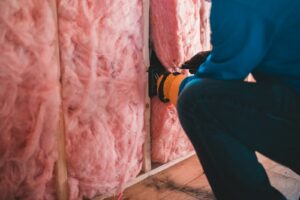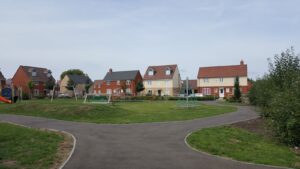Local makers renew Newcastle
 Marcus Westbury explains how nurturing local creative talent has helped turn around Newcastle’s ailing city centre to make it one of Lonely Planet’s top ten cities in the world
Marcus Westbury explains how nurturing local creative talent has helped turn around Newcastle’s ailing city centre to make it one of Lonely Planet’s top ten cities in the world
In late 2008 a loose coalition of colleagues and unlikely allies – artists, lawyers, business leaders and myself – embarked on a modest attempt to reboot some life into my hometown.
Newcastle is an old industrial city of a few hundred thousand people about two hours drive north of Sydney. For decades it has been suffering from endemic and structural problems. Its two main streets were littered with more than 150 empty buildings, shops and offices as the direct and indirect result of the loss of the region’s biggest employer (a steelworks) in the 1990s, an earthquake in the late 1980s, transport planning decisions of the 1950s and several decades of business and residential flight to the sprawling suburbs.
Renew Newcastle is, in the UK sense, easily understood as a ‘meanwhile’ project – an effort to encourage and incubate temporary uses. But the more time I have spent in and with folks from the UK I have realised that it is different in several key respects – both in strategy and expectations.
Those differences stem inevitably from the unique local circumstances, from changing cultural and social trends that inspired the project in the first place, and to the lack of precedents that existed in Australia for meanwhile uses which forced us to make it up as went along. Starting with different assumptions and tools at our disposal our approach led at times to different outcomes and results.
 THE NEW GLOBAL LOCAL
THE NEW GLOBAL LOCAL
Prior to 2008 most of my work had been as a festival director, occasionally as a writer, broadcaster and essayist and as someone who was increasingly frustrated with cultural policy processes.
My interest was in the way that cultural production was decentralising while policymakers, funding bodies and infrastructure planners were still working from the assumption that cultural production was top-down, hierarchical and highly centralised. An unsolicited commission to write an essay about what this means for cities and urban planning led both intellectually and practically to the development of Renew Newcastle.
I have not found comparable international data but the rise over the last decade – in Australia at least – of active creative production is staggering. The Australian Bureau of Statistics ‘Work in selected culture and leisure activities’ series (which tracks a mix of paid and voluntary work but excludes hobbyists) shows, for example, that the numbers of jewellers in Australia increased nearly eight-fold in just six years from 2001 to 2007. The number of craft makers or visual artists across all forms across the same time frame both nearly tripled. While the effect was less pronounced, areas such as music, computer art and others all experienced at least double-digit percentage growth.
There is a whole other article on what is driving this growth – but in summary much of it is what I sometimes refer to as the ‘Etsy-effect’, named after the global craft marketplace that provides the most prominent example. For the first time in history people in local communities have access to global information, education and markets for the things they create themselves. The more we have worked with both Renew Newcastle and Renew Australia the more we have uncovered hundreds of hidden artists, artisans, craftspeople, musicians and makers who have little or no visible presence in their local communities but are already exporting around the world.
HOW IT HAPPENED
One of the key principles behind Renew Newcastle was that those 150 empty buildings were lost opportunities to incubate those people. The aim was to draw out that creativity and activity latent within the local community and use it a transformative force to revitalise a dying city centre.
On a practical level that meant setting up a not for profit company, designing the right kind of legal frameworks to cover off everything from licensing access to the properties to insurance, health and safety and everything in between and then convincing the owners of some of the many vacant buildings to get behind the scheme. We asked owners to lend us buildings on a rolling 30 day basis so that any party could terminate the agreement at any time. We were fortunate in convincing initially the city’s largest property owner and later many more of the value to be gained.
In tandem, Renew Newcastle went to the local community in search of interesting projects and ideas that were seeking an opportunity to incubate and experiment the projects they passionate about. We did not seek artists from outside and, unlike some meanwhile schemes, our aim was for indefinite incubation and not short term or one-off projects.
We looked for initiatives that were, wherever possible, likely to be self-propelling and self-perpetuating – none of our projects received any funding in their formative stages. The overwhelming majority came from individuals and self-organised groups and few were from established organisations. 
While economic development is a key part of the agenda, Renew Newcastle neither expects nor excludes commercial businesses. We ask only that you make what you do and that you are capable of being viable on your own terms – that a project that will be run by volunteers can point to a supportive community or that a business proposal is on solid (but not onerously so) foundations. As a result the projects we have supported have ranged from artist-run gallery and studio projects through to commercial designers, photographers and publishers.
At last count Renew Newcastle had supported more than 80 projects from record labels to milliners, from teenagers to retirees. More than 40 former vacancies in the city are currently active and occupied as a result of our activities – some still play host to Renew Newcastle projects while others have been displaced by new commercial businesses many of whom explicitly cite the activity and opportunity created by Renew Newcastle as the reason why they have set up in an area that had failed to attract much in the way of new investment for the last decade.
In 2011, Lonely Planet – the world’s largest travel publishers – named Newcastle as one of the top ten cities in the world, citing that ‘Australia’s most underrated city’ has transformed itself ‘from “steel city” to creative hub’ including ‘an explosion of artists… photographers, fashion designers, digital artists and more as part of the inner-city regeneration scheme Renew Newcastle’. It was the first time that any Australian city had made that list.
Recently SGS Economics and Planning undertook the first independent assessment of Renew Newcastle. Among its key findings were that it had directly contributed to avoidance or mitigation of blight and antisocial behaviour; improved business and community confidence; improved skills development; encouraged greater volunteer engagement; created intellectual capital, some of commercial value; created jobs; made cost savings due to reduced maintenance; and improved regional ‘brand value’, tourism and inward investment.
Most importantly of all, at least from my point of view, is that 80 projects involving hundreds, if not thousands, of local makers, creators and citizens have been given an opportunity to do what they do they believe in and are passionate about. In turn, those people have engaged, entertained and inspired many tens of thousands more both directly and indirectly. Optimism is replacing despair and stories about what is happening and possible are displacing stories about what has gone wrong and who is to blame.
- A longer version of this article is available in New Start’s September ezine















